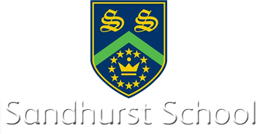Photography
Intent:
At the heart of the Art and Design curriculum are the learning needs of each individual student at Sandhurst School. We aim to ensure that every student leaves our school with a secure range of skills and a broad knowledge of artists, cultures, and genres. The art department are passionate and enthusiastic practitioners and we work hard to share our love of art with students and recognise the importance of delivering lessons in a creative and energetic manner to enthuse all learners to help shape the further generation of artists.
Further information:
Our Curriculum
We have created schemes of work that suitably excite, challenge, and enthuse all learners with plenty of opportunities to work independently on the creation of artwork. We feel it is important for students to be aware of photography from other cultures and deliver topics that break down prejudices through appreciation of other cultures and the art they produce. We teach students not only to have respect for their own and other students’ photography but also work from a wide range of other artists and craftspeople.
Through the medium of photography, students explore a range of topics to develop their skills and understanding of the formal elements of photography. Students are required to create artistic outcomes for each topic and will create a variety of ‘drawing with photography’ both digitally with the use of Adobe Photoshop and practical outcomes, such as weaving, collages, tracing, ripping, cutting, scratching, layering, and image transfers. Product design is a main aspect of this course allowing students to make connections within industry and design careers.
Implementation: Teaching and planning
The art department are passionate and enthusiastic practitioners and we work hard to share our love of photography with students and recognise the importance of delivering lessons creatively and energetically to enthuse all learners to help shape the further generation of photographers. Schemes of Work are constantly evaluated and updated to keep up to date with the current interests of year groups. Student feedback is of vital importance regarding the enjoyment of topics and always have fresh ideas to develop topics further. All topics, resources, tasks, instructions, video links, and exemplar work from previous students are presented on Google Classroom so that students have constant and instant access to all material required. Students use pre-populated slides with holding frames, sentence starters, and suggested layouts to present their work. These are shared with me so I can monitor progress at all times. Students follow a rigorous layout for their slides to ensure professional standards of presentation are achieved.
Assessment
Students require and receive constructive feedback in every lesson. Instant feedback has to be given in order for students to make improvements to ensure success. Grade descriptors and examples of each are shared throughout their journey. Feedback will be shared with the entire class or individually. Final grades for topics are given at the end of every month and receive detailed feedback and opportunities to make improvements to achieve the next grade. Self-evaluation is an important part of reflection before a new topic is started so that areas of weakness are addressed. Topic grades are tracked and an average grade is populated to be sure the target grade is achieved or higher.
Impact
We constantly develop our ambitious curriculum to allow for the highest achievers to make excellent progress whilst at the same time supporting, nurturing, and building on the skills of the lower achievers. Throughout their studies we will support and develop students’ literacy and oracy skills, these are key for students to become commentators, analysts, and reviewers in the field of art and design. The benefits of creating artwork can be therapeutic and promote well-being which is an important part of all students' emotional development, in which our SEND students thrive.
We help students to recognise that a wide range of careers can be pursued within the medium of photography to give their lessons a sense of purpose. We embed information about contemporary photographers and creative careers within the arts in our schemes of work and make clear that the skills learnt are transferable. KS4 students have the opportunity to visit Kew Gardens and Tate Britain to enrich their learning experience and expand their cultural capital.
As independent thinkers, pupils will become effective in applying a wide range of media, resources, techniques, creative and technical skills, experimentation, and innovation. We encourage constant review and refinement of work to achieve better outcomes and to develop students’ resilience. Celebration of pupils’ achievements ensures they have a sense of pride in their work and understand what ‘good looks like’. We achieve this by displaying work during lessons, in displays within the department, around the school, and in the school newsletter. This models successful outcomes for students and shows them how proud they should be of their work.

Homework policy
Curriculum pathways
KS4 Personal Learning Checklists (PLC)
KS4 exam information
| Exam | Photography |
| Board | AQA |
| Spec | 8202 |
| Paper 1 |
Exam Paper available January Year 11. Minimum 9 weeks of preparation on a topic chosen by the student from the Exam paper, followed by a 10-hour practical exam.
Exam Portfolio and practical exam together = 40% of the qualification |
Department Contact
Mrs L Laws
llaws@sandhurstschool.org.uk

